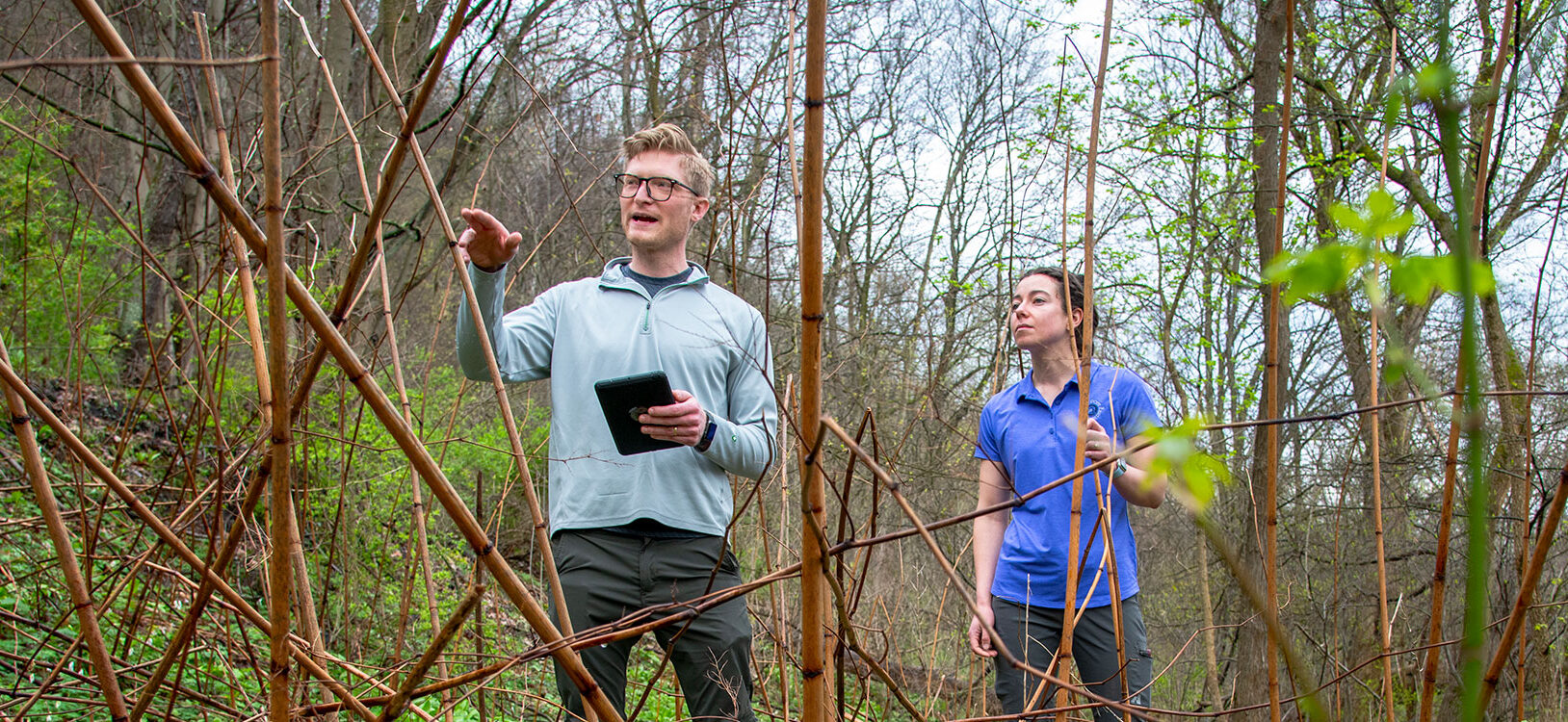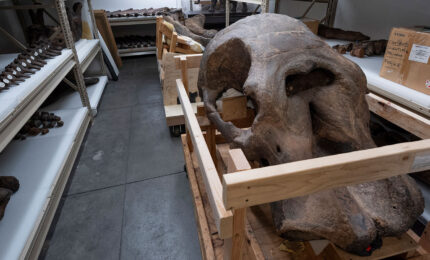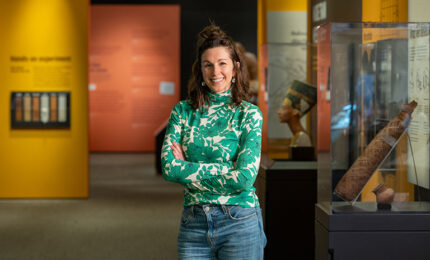Anybody who has walked Pittsburgh’s riverfronts has seen it covering the shorelines—a dense, bushy, broad-leafed plant known as knotweed.
Sometimes reaching 9 feet high, knotweed spreads prolifically wherever it takes root and is nearly impossible to manage. The deer won’t eat it and there isn’t a group of volunteers large enough to rip it by the roots before it spreads.
That’s why botanist Mason Heberling was curious when, several years ago, he heard of a “knotweed festival” held every August in Blairsville, Pennsylvania. He wondered why this borough 42 miles east of Pittsburgh would celebrate what botanists consider an invasive species.
So, he checked it out, and found that it was more of a celebration of the waterfront than a festival promoting the pesky plant.
“It was more of a friendly nod, not really a celebration of knotweed,” recalls Heberling, the associate curator in the Section of Botany at Carnegie Museum of Natural History. “Kind of like if you have lemons, make lemonade.”
It was a new way of framing the conversation around invasive species that has proven instructive for Heberling and Rachel Reeb, a postdoctoral fellow at the museum, in their work to educate the public. Funded by a $225,000 grant from the Richard King Mellon Foundation, Reeb and Heberling are spearheading educational outreach initiatives about invasive plants in partnership with Audubon Society of Western Pennsylvania, Phipps Conservatory and Botanical Gardens, Pittsburgh Botanic Garden, and other organizations.
They’ve held workshops with partner organizations, surveyed members of the public, and researched new ways of integrating messaging in museum exhibition spaces. The initiative will culminate in its own exhibition about invasive flora and fauna in 2025.
Invasive species—those that have been transported by humans to an area outside their natural range and cause societal or environmental harm—are a massive concern around the world. Invasive plants can crowd out important food sources for local wildlife and displace rare and culturally significant flora. Globally, invasive species are one of the leading causes of biodiversity loss and extinction. They can damage public infrastructure, like highways, and be expensive to manage.
A 2021 study published in the journal Science of the Total Environment estimated that invasive species have cost North America more than $26 billion a year since 2010, and the economic cost of invasive species globally has been $1.3 trillion over the past 50 years, according to the U.S. Department of Agriculture.
Yet, it’s rarely discussed in museum spaces.
“A lot of people don’t think about this at all,” says Sarah Crawford, the Museum of Natural History’s director of exhibitions and design. “So it gives us an opportunity to open a dialogue about it.”
When public education campaigns actually do address invasive species, the issue is often couched in alarmist language that misplaces blame for the problem. Some have employed “Wanted” posters that cheekily characterize certain species as villains that need to be banished. But the plants didn’t bring themselves here. A lot of them are ornamental or culinary, which humans intentionally introduced.
“It’s not the plant’s fault. It’s our actions that are leading to this,” Crawford says. “That seems like a very basic message, but just telling the story in that way will be very different from what other museums are doing.”
Messaging campaigns about invasive species can also employ nativistic language that echoes some of the harmful anti-immigration rhetoric infused in geopolitics. Some social scientists have raised ethical questions about the way botanists talk about some species not “belonging” to a place, similar to the way hate groups have talked about migrants.
It doesn’t help that many invasives have geopolitical names—Chinese wisteria, Japanese barberry, Russian olive, Oriental bittersweet.
Then there’s Japanese knotweed.
When talking with the public, Heberling occasionally has noticed a mumbled allusion to immigration politics when he mentions Japanese knotweed, but those moments are rare. More common are exasperated responses about what to do about it.
Like with climate change, discussions of how to address the problem of invasive plants can easily
become overwhelming.
“We will never completely solve the problem of knotweed, and people will always have to deal with it in their land management,” Reeb says. “But we’re trying to spread this message that you have an opportunity to prevent the next knotweed of the future.”
That was the vibe they noticed in Blairsville last summer, when Heberling and Reeb tabled at the knotweed festival.
“We will never completely solve the problem of knotweed, and people will always have to deal with it in their land management. But we’re trying to spread this message that you have an opportunity to prevent the next knotweed of the future.”
–Rachel Reeb, postdoctoral fellow at Carnegie Museum of Natural History
The event—which included a parade, petting zoo, vendors, and crafts—wasn’t actually about highlighting the threats posed by knotweed. Rather, it was a tongue-in-cheek celebration of the plant that covers the borough’s waterways. Many festivalgoers didn’t even know that knotweed was invasive. Others chose to embrace their new reality by turning the plant into crafts or making knotwood soap. In this more relaxed context, Heberling and Reeb were able to have constructive conversations with the public about an issue many had never before considered.
This is not to say that Reeb and Heberling want to spur complacency. Rather, they are looking for better ways of convincing people to care about this problem. Their exhibition, slated to open next year at the Museum of Natural History, is still being developed, but it will likely be integrated into the Hall of Botany as well as function as a stand-alone exhibition on the third floor overlook that tells a more expanded story.
Reeb notes, “By highlighting stories about invasive species and their impact on our environment and our society, we’re hoping to promote a sense of responsibility.”







